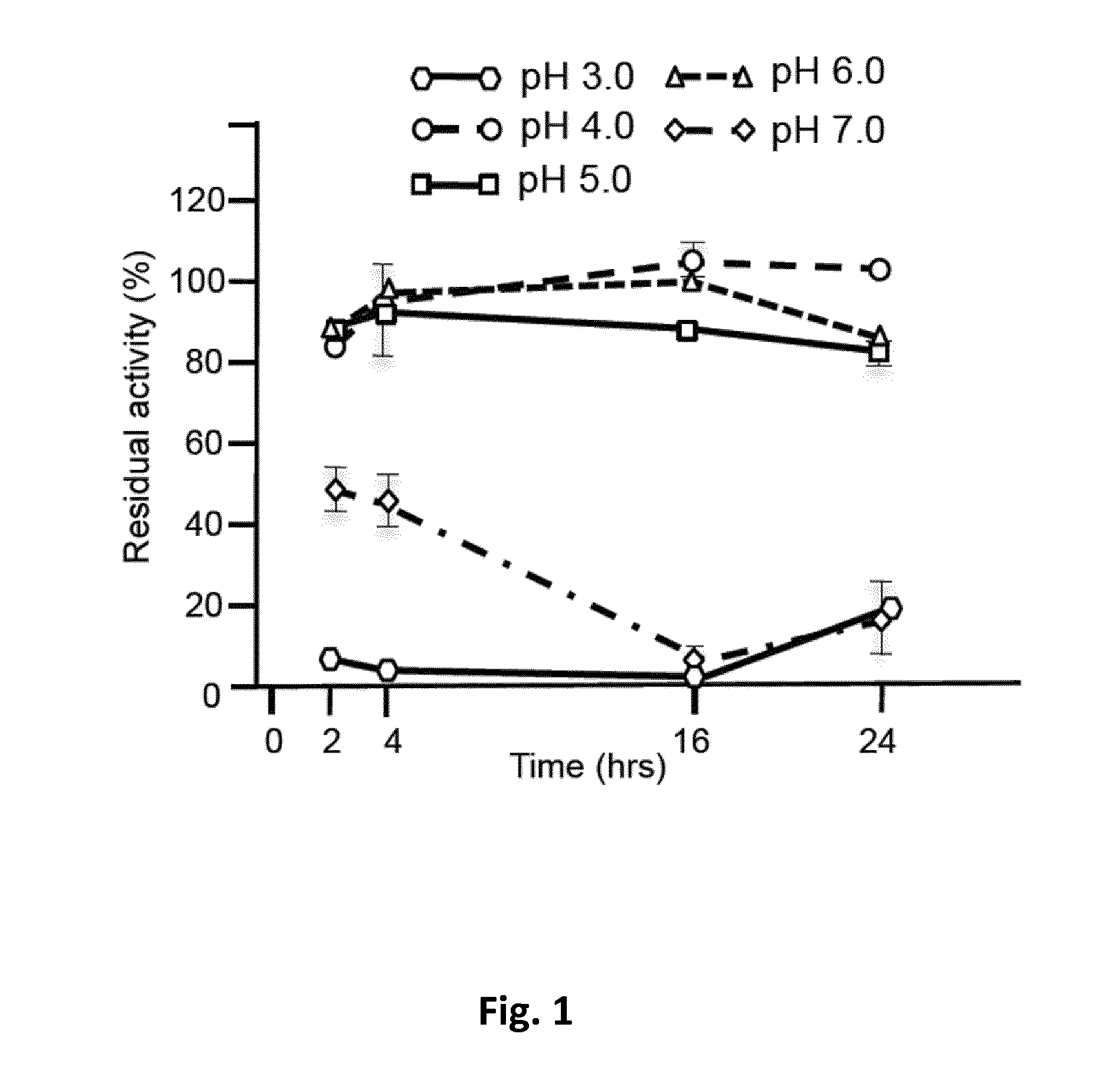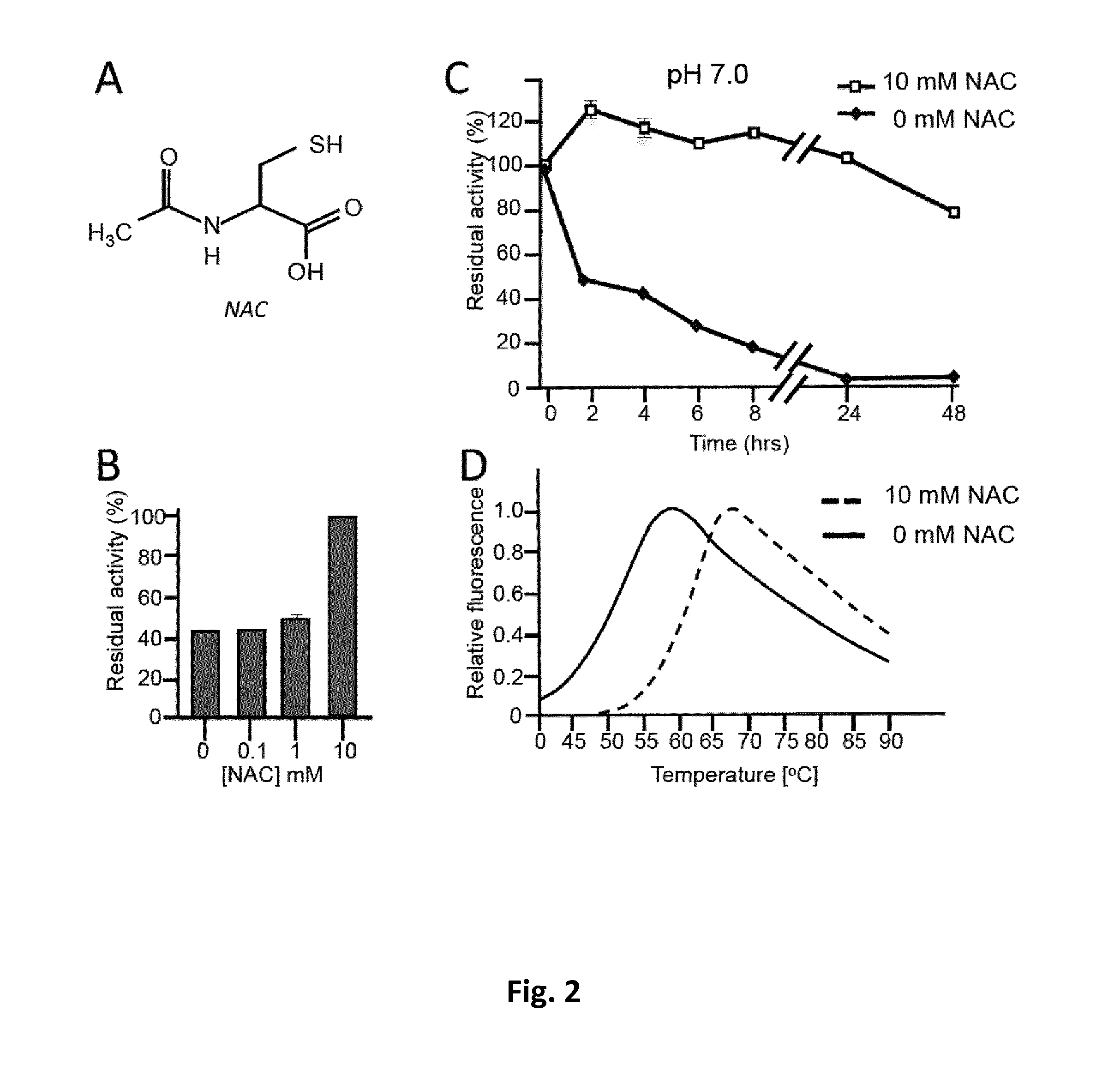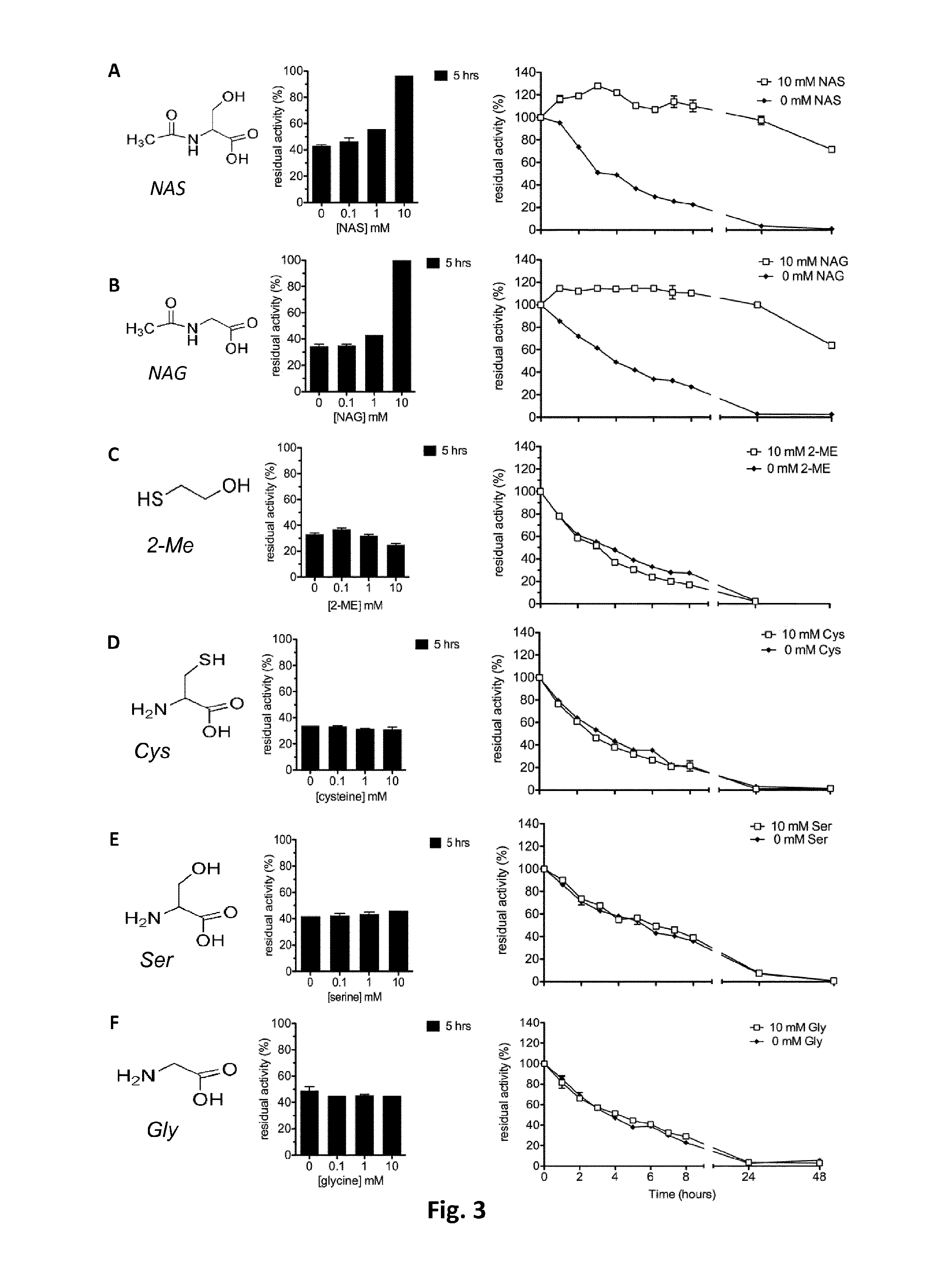Allosteric chaperones and uses thereof
a chaperone and allosteric technology, applied in the field of allosteric non-inhibitory chaperones, to achieve the effects of enhancing the effect of rh-alpha-gal a, increasing the thermal stability of rhgaa, and highest enhancement of gaa activity
- Summary
- Abstract
- Description
- Claims
- Application Information
AI Technical Summary
Benefits of technology
Problems solved by technology
Method used
Image
Examples
Embodiment Construction
Materials and Methods
Fibroblast Cultures
[0069]Fibroblasts from PD and Fabry disease patients were derived from skin biopsies after obtaining the informed consent of patients. Normal age-matched control fibroblasts were available in the laboratory of the Department of Pediatrics, Federico II University of Naples. All cell lines were grown at 37° C. with 5% CO2 in Dulbecco's modified Eagle's medium (Invitrogen, Grand Island, N.Y.) and 10% fetal bovine serum (Sigma-Aldrich, St Louis, Mo.), supplemented with 100 U / ml penicillin and 100 mg / ml streptomycin.
Reagents
[0070]rhGAA (alglucosidase, Myozyme) and rh-alpha-Gal A (agalsidase-beta, Fabrazyme) were from Genzyme Co, Cambridge, Mass., USA. Enzymes were prepared and diluted according to manufacturer instructions to NAC, NAS, NAG, Cys, Ser, Gly, 2-mercaptoethanol, 4-nitrophenyl-α-glucopyranoside (4NP-Glc) NB-DNJ and DGJ were from Sigma-Aldrich.
[0071]Epigallo catechingallate (Cat. No. 93894) and Resveratrol (Cat. No. 34092) were purchased ...
PUM
| Property | Measurement | Unit |
|---|---|---|
| pH | aaaaa | aaaaa |
| pH | aaaaa | aaaaa |
| pH | aaaaa | aaaaa |
Abstract
Description
Claims
Application Information
 Login to View More
Login to View More - R&D
- Intellectual Property
- Life Sciences
- Materials
- Tech Scout
- Unparalleled Data Quality
- Higher Quality Content
- 60% Fewer Hallucinations
Browse by: Latest US Patents, China's latest patents, Technical Efficacy Thesaurus, Application Domain, Technology Topic, Popular Technical Reports.
© 2025 PatSnap. All rights reserved.Legal|Privacy policy|Modern Slavery Act Transparency Statement|Sitemap|About US| Contact US: help@patsnap.com



